Fixes for some common post-shoveling aches!
We’ve all experienced some aches and pains after working hard to clear the snow from our driveways and sidewalks.
Here are some physiotherapy stretches you can try to alleviate pain in your shoulders, knees and back. You should not be feel any pain with these exercises. If your pain is being caused by tight muscles, they should release with your breathing (consciously relax the muscles while you exhale).
For the following stretches, hold each one for 5 deep breaths. If the stretches do not help to release your muscles, the tension is likely a protective reflex and you do not want to overstretch these areas.
Shoulder Rolls
Stand up and roll the shoulders backward.
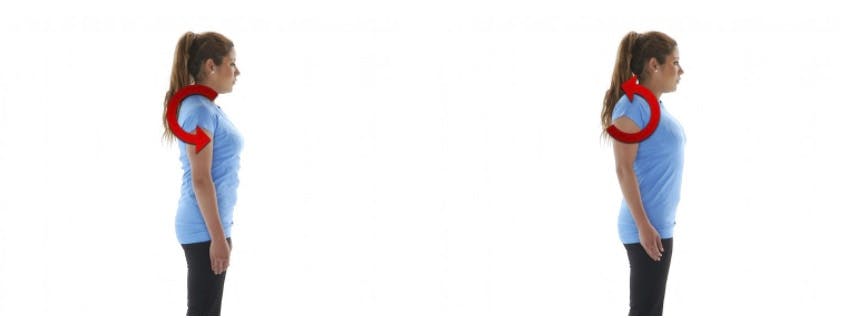
Pec Stretch
- Stand up straight in front of an open doorway.
- Place your hands onto either side of the doorway at shoulder level.
- Keep your core and glutes tight.
- Lean your body weight forward until you feel a stretch along your chest and in front of your shoulders.
- Maintain the position and relax.

Lats Stretch
Start on all fours, bring the buttocks onto (or as close as you can) your heels and lengthen the arms (palms up) in front as far as possible without moving the buttocks. Keep the head down and aligned with the spine.
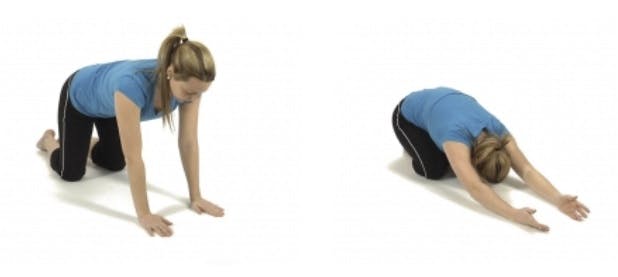
Cross Body Stretch
- Stand and place your upper arm across your chest and your hand over the opposite shoulder.
- Squeeze your shoulder blades together and use your other hand to push your arm in towards you, until you feel a stretch in the back of your shoulder.
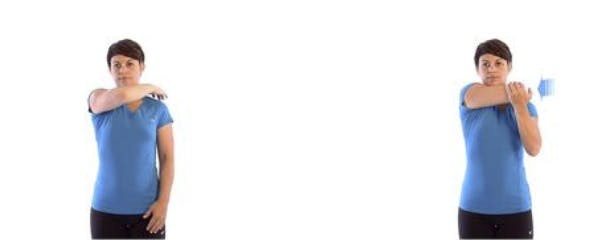
Quadriceps Stretch
- Lie on your side with your injured leg up and your bottom knee bent in front of you to protect your back.
- Reach back and grasp your ankle of your injured leg and gently pull towards your buttocks.
- Move your knee back without arching your back until you feel a stretch in the front of your thigh.
- Keep your knee as low to the floor as possible and maintain the position.
You can use a towel or belt around your ankle to pull it towards your buttocks.
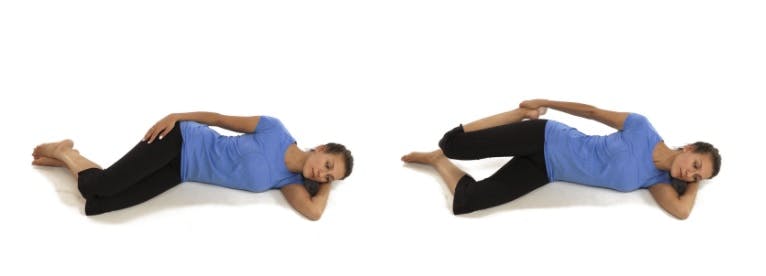
Hamstrings Stretch
- Start seated with one leg extended in front with the other foot resting on your inner upper thigh. You can also sit with your hips on a bloc or folded blanket for this pose.
- Reach for your foot with both hands and hold the position.
- Your body should be aligned nicely with the leg straight forward and the hips and shoulders squared.
- Breathe normally when in position.
- Repeat on the other side.
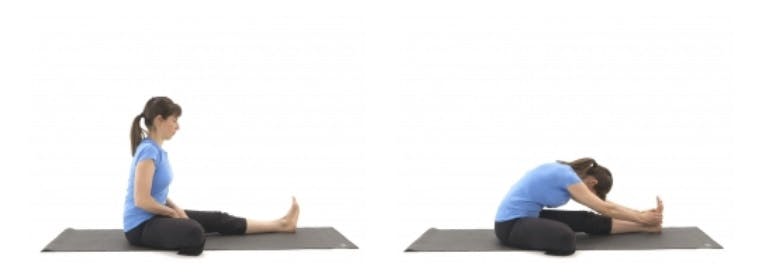
Groin Stretch
Sitting tall with a straight spine, place the soles of your feet together in front of you. Use your outer thighs to draw your knees toward the floor. Holding your ankle, use your abdominal muscles to fold forward. Keeping your elbows back along your body, continue to draw your knees toward the floor. Use sinking breath to release muscle tension.
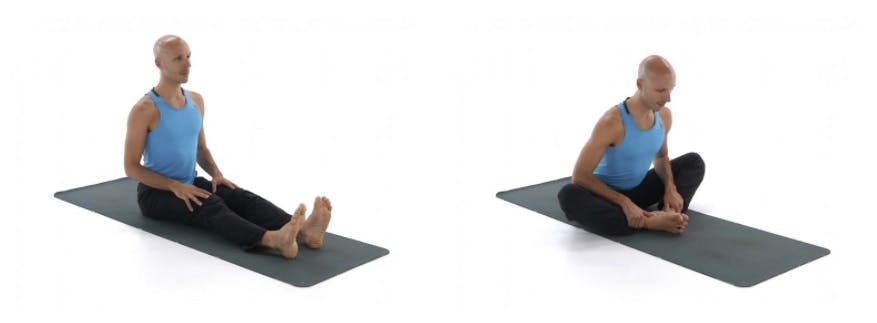
Child’s Pose
Begin kneeling on all fours. Push back and reach your arms out in front of you. To make more room for your body, separates your thighs for wide-knee version of the child’s pose.Rest and breathe, allowing your body to completely relax.You can rest your hand on a block for greater back and neck support. If you have knee pain or discomfort, place a rolled-up yoga mat or folded blanket under your leg behind your knee.
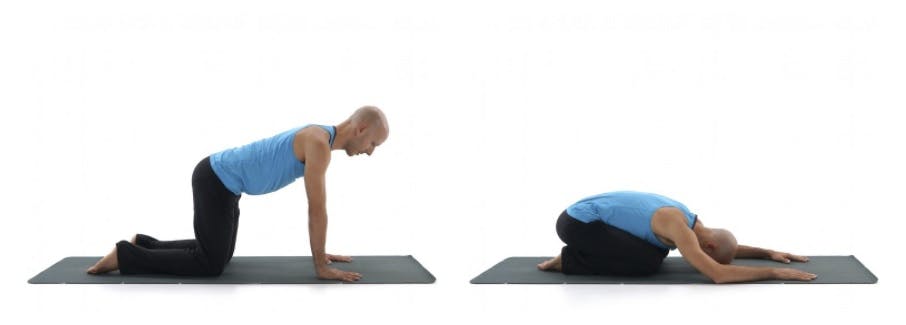
Cat and Cow
- Start on all fours with the hands under your shoulders and knees under your hips, with a neutral spine.
- Exhale, then slowly round your back to the sky, starting from the tailbone.
- Inhale, then extend the spine starting from the tailbone and lifting the crown of head last.
- Repeat as needed, flowing with your breath.
- Return to neutral spine position at the end.
If you have wrist discomfort or injuries, use “fist for wrist” with palms facing each other. For sensitive knees or other knee concerns, use a knee pad for comfort.
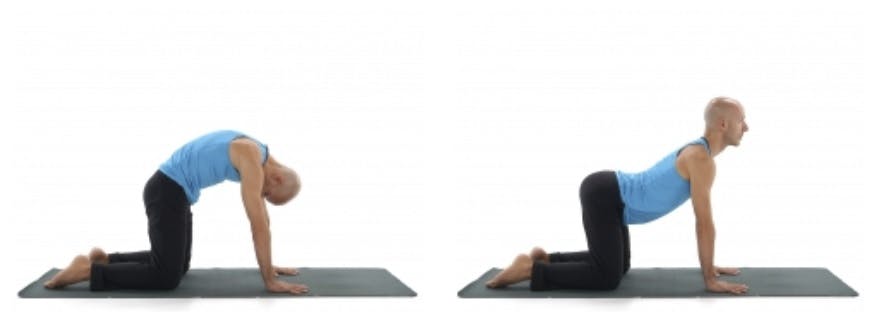
Figure 4 Stretch
- Cross the legs with the leg to be stretched on top.
- Gently pull the lower knee toward the chest until a stretch is felt in the buttocks.
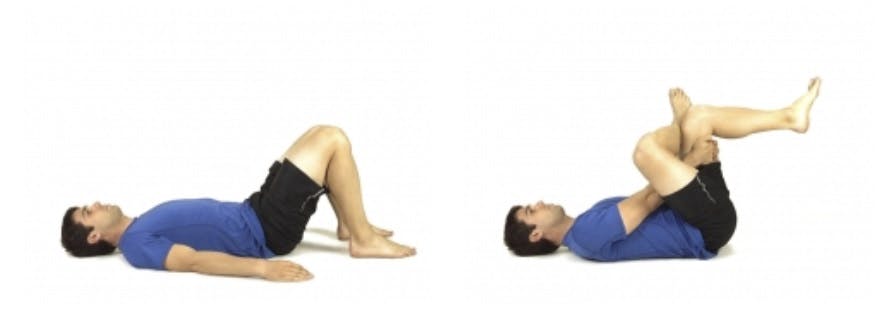
Seated Twist D
In a seated position, extend your legs.Bring your right knee up with the sole of your foot on the floor.Cross your left leg under your right leg and your right leg over the left.Place your right hand next to you or behind you and sit tall.Beginning at the base of the spine, rotate to the right, bringing your left forearm around to hold you right shin/knee.Use your core strength instead of your arm to deepen the twist.Lengthen your spine with every inhale, twist further with every exhale.If you have difficulty keeping your back straight, sit on a rolled-up yoga mat or folded blanket. Repeat on the other side.
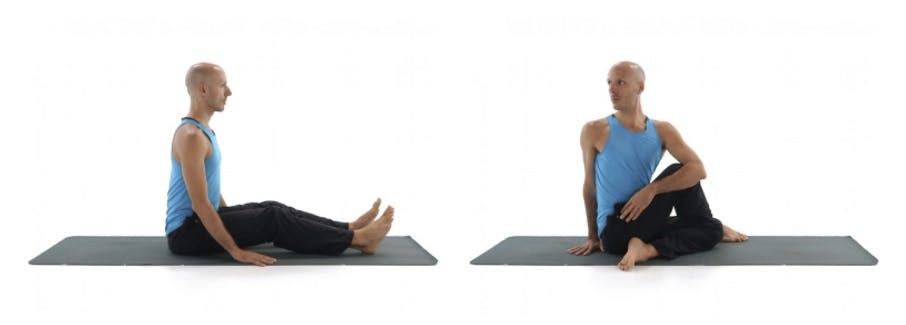
Also check out our previous post about how to prevent injuries from shoveling before they happen: AVOIDING INJURY WHILE SHOVELING
If you’re having difficulty with pain after shoveling, come and see one of our expert therapists at EQ Physio for a free 10-minute consultation to discuss how we can help you. Our clinic is conveniently located at the corner of Dundas and Trafalgar in Oakville.
